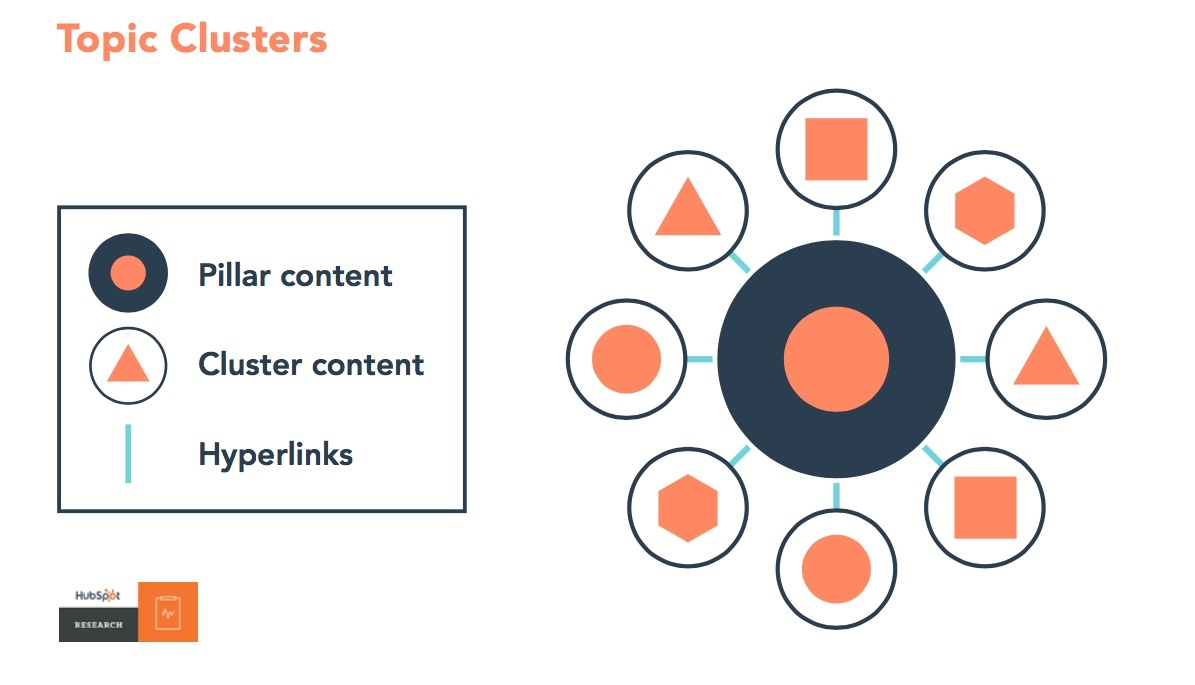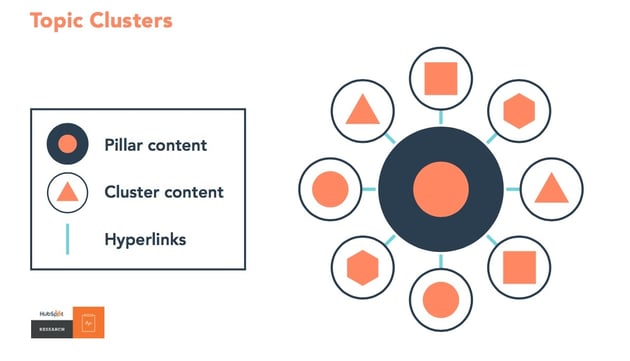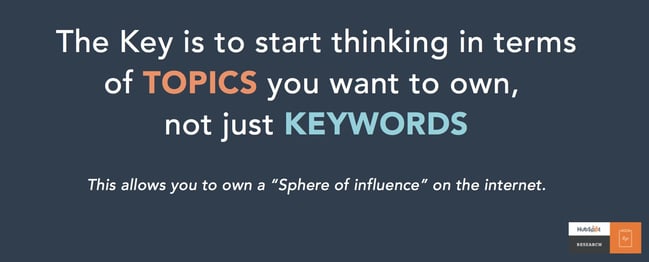

Competition on search engines like Google is extremely high. Companies all over the world are constantly battling with each other to rank highly on a Google SERP (Search Engine Results Page). SEO (Search Engine Optimisation) experts would optimise web pages and content based on SEO best practices, as well as include low competition, long-tail keywords with high search volumes to drive traffic to that specific page.
In the past, this was all that was required – or even considered. However, gone are the old days where search engines would take the exact words and phrases entered and serve up the web pages that contained those keywords word for word.
Having web pages and content that include your keywords is simply not enough anymore.
SEO has evolved – and it is moving from being purely based on keywords (specific words or terms that you want to be ‘found for’) to be based around topic clusters.
Huh? Topic Clusters?
A topic cluster is a model where you have one central ‘pillar’ piece of content or webpage which acts as the central hub for an overarching topic. Then, off this central hub, you build multiple pages that link back to the pillar content.

Source: Matthew Barby
For example, if you provide accountancy software, you might have a central page around the benefits of accountancy software, and then have various clusters of content around how your product could benefit customers in various industries.
By linking from the main pillar content to the cluster content and then BACK to the pillar content, you’re telling Google that the pillar page is important and holds value, which should help it to rank higher over time.
Okay great, but what can I do to move towards clusters?
Companies aren’t changing their efforts just because consumer search behaviour has changed, it’s because the search engines themselves are also changing. At the end of the day, if you want to be found on Google, you need to follow Google’s rules.
First and foremost, in order to create a topic cluster, you need to look at your current content assets and group them into topics, as well as map out which ‘clusters’ should link to which ‘pillars’. Once you’ve identified your pillars, the next step is to use things like buyer personas and customer pain points to identify the clusters that you’ll surround your pillar with.
Want to find out more about how topic clusters can improve your website's search ranking?
You should design a plan detailing how you will build and enhance the amount of clusters you create to surround your pillars with, as this will increase the pillar’s authority and importance, which in turn should help Google understand it’s importance and push it higher up in rankings.
Remember…

So How Do I Apply This To My Business?
Everything tracks back to your buyer persona work. The most neglected part of successful marketing is having a continuously evolving definition of two things:
- The problems of my buyer persona.
- The solutions my company provides to those problems.
We must strive to rank for topics related to these two pillars of our content. When our buyer persona types their problem in to Google, do they hit our digital assets? If they don’t, what do they hit? And if they are not finding us who do they go to?
Answer: Your Competitors
We must cease in taking this casual slapdash approach to our SEO, and actually begin to create content on the topics our prospects care about and provide solutions to their problem(s). A great example of this at play is the work that many social influencers do, many of whom have built an organic following from scratch.
Let’s take English fashion and beauty vlogger Zoella for example.
Do you think that Zoella has or had a technical SEO background to drive traffic to her content? I can guarantee that she did not, but what she was/is great at is solving for the problems of her buyer personas and then offering them solutions for it. Google then began to see her as an authority around topics related to fashion and beauty for young women in England. If a young girl with no SEO expertise can achieve this, you and your experienced team can 100% get there.
Tip #22: Regardless of how much search engines evolve, their principal purpose is to help the searcher to find the content that best answers their question.
Therefore, when it comes to the creation of your website and its content – try to think from the perspective of your website visitor and what they typed into the Google machine to find your website.
Once you have this information, build a library of content (topic clusters) relevant to the problems your business solves – and, over time, Google will see you as an authority on the topic.
If you'd like to receive the latest 'All that PR & Marketing Bollox...Explained!' blogs straight to your inbox every week, you can subscribe below:



Submit a Comment